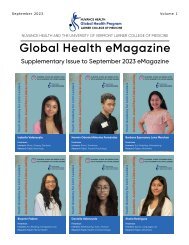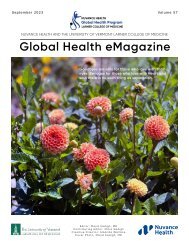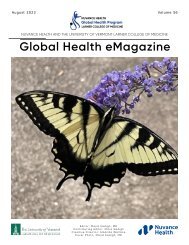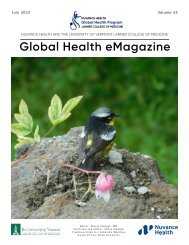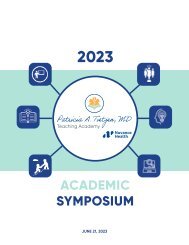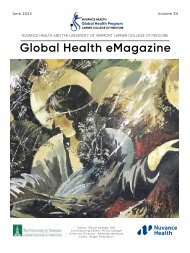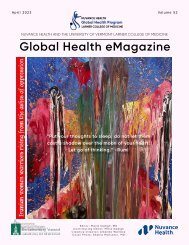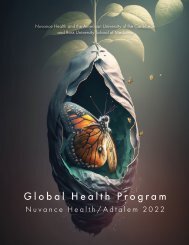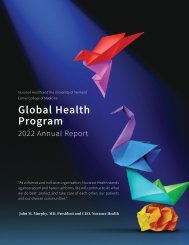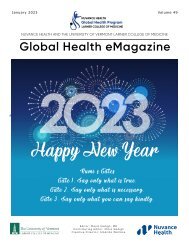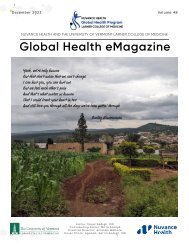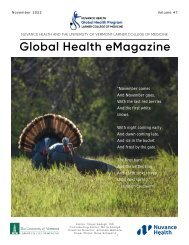eMagazine March 2023
You also want an ePaper? Increase the reach of your titles
YUMPU automatically turns print PDFs into web optimized ePapers that Google loves.
OUR PEOPLE,<br />
OUR MISSION<br />
Global Health<br />
<strong>eMagazine</strong><br />
<strong>March</strong> <strong>2023</strong><br />
Highlights<br />
Reviews<br />
GH Narrative<br />
Reflections<br />
Hispanic and Latinx Voices<br />
Global Local<br />
Voices of Ugandan<br />
Students<br />
Nursing Division<br />
Women’s Health Education<br />
Innovation and Technology<br />
Our Beautiful Planet<br />
clinical course of nodding syndrome begins with behavioral changes in previously<br />
healthy children–mainly between the ages of 5-15 years at onset–which is<br />
usually followed by recurrent episodes of head-nodding spells, cognitive decline,<br />
and generalized tonic-clonic seizures at later stages. Eating and other sensory<br />
stimuli such as cold weather, cold water, starvation, and febrile illnesses appear<br />
to trigger episodes . Most affected families commonly have multiple children<br />
with NS compared to other community members, suggesting a probable genetic<br />
connection. Nodding syndrome occurs in the same areas where river blindness<br />
is also prevalent, and this association has led some researchers to believe that<br />
the same parasitic nematode, Onchocerca volvulus, may be a culprit in both<br />
illnesses. But there is no scientific evidence that O. volvulus invades the central<br />
nervous system, so it is unlikely to cause neurodegenerative damage in patients<br />
with nodding syndrome.<br />
A virus carried by the black fly (the same vector as with river blindness) is one<br />
theory of NS’s origin. Other proposed etiologies include measles, malnutrition,<br />
toxins, and autoimmune response. Studies have linked the disease to numerous<br />
associations like Parkinson’s disease (David Lagoro Kitara et al.), nematode<br />
infestation and food stress (https://doi.org/10.1016/j.ensci.2022.100401). There<br />
has been no conclusive evidence on cause, diagnosis and management of the<br />
disease.<br />
The latest outbreak has left more than 2,100 children with lifelong disabilities,<br />
overwhelming their families. In Uganda, nodding syndrome is seen in 0.7% of the<br />
children aged 5-18, but in certain districts the prevalence is as high as 4.6%. A<br />
nonprofit that operated two clinics that fed and treated many of these children<br />
ran out of money and shut down in 2017, crippling the region’s capacity to care<br />
for them. Children with the syndrome require constant supervision, as a seizure<br />
could strike at any moment and the disease hinders decision-making abilities<br />
and impacts their behavior. Families with children disabled from the disease are<br />
strained and most have lost children due to lack of support.<br />
Art to Remind Us of Who We<br />
Can Be<br />
Article of the Month<br />
You’re Invited<br />
Photo News<br />
Calendar<br />
Global Health Family<br />
Resources<br />
Previous Issues of<br />
the <strong>eMagazine</strong><br />
Link to a Documentary Report on Nodding Disease<br />
Nodding Disease in North Uganda<br />
26




